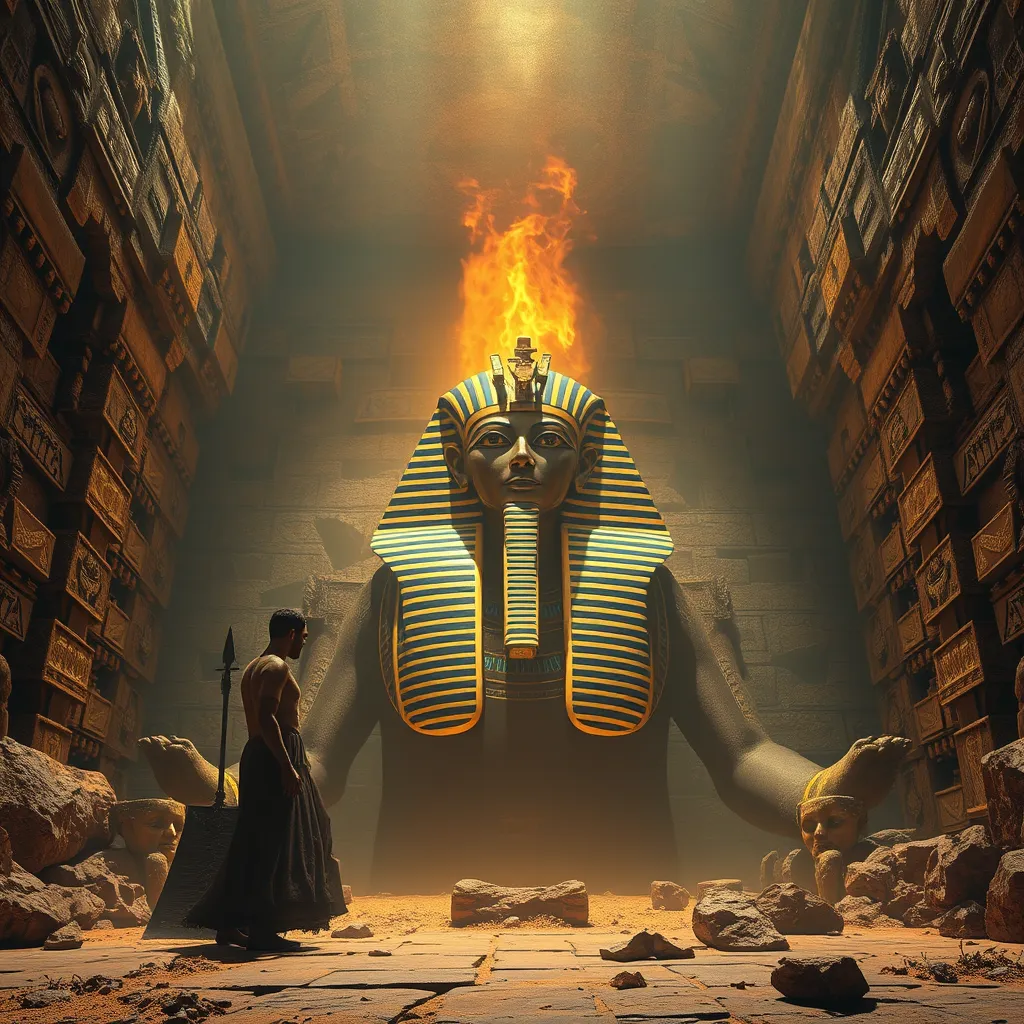The Curse of Tutankhamun: The Legend of the Boy King and the Tomb of the Dead
I. Introduction
Tutankhamun, often referred to as the “Boy King,” is one of the most renowned figures in Ancient Egyptian history. His brief reign during the 18th Dynasty, coupled with the discovery of his nearly intact tomb in the Valley of the Kings, has captivated historians and the public alike. Following the unveiling of his tomb in 1922, a legend emerged surrounding a curse supposedly placed upon those who disturbed the young pharaoh’s resting place.
This article explores the life of Tutankhamun, the discovery of his tomb, the legend of the curse, scientific explanations for the associated deaths, and the enduring cultural impact of this enigmatic ruler.
II. Early Life of Tutankhamun
Tutankhamun was born around 1341 BC, likely to Akhenaten, a controversial pharaoh known for his radical religious reforms. His mother was likely one of Akhenaten’s sisters, making Tutankhamun part of a royal lineage steeped in the complexities of ancient politics and religion.
He ascended to the throne at the tender age of nine, after the death of his predecessor, and ruled during a tumultuous period characterized by political upheaval and religious transformation. Key figures in his early reign included:
- Aye: His grand vizier who played a significant role in governance.
- Horemheb: A military leader who later became pharaoh and sought to erase the memory of Akhenaten.
Under their guidance, Tutankhamun attempted to restore traditional polytheistic beliefs and the veneration of the god Amun, which had been suppressed during his father’s reign.
III. Discovery of the Tomb
The tomb of Tutankhamun was discovered in November 1922 by British archaeologist Howard Carter, funded by Lord Carnarvon. After years of searching, the discovery was monumental, revealing an untouched burial site filled with treasures that had been hidden for over three millennia.
Among the key findings were:
- Golden funerary mask of Tutankhamun
- Jewelry, chariots, and weapons
- Canopic jars containing his embalmed organs
- Intricate wall paintings depicting the afterlife
The initial media coverage was explosive, with newspapers dubbing it the “find of the century.” The treasures from Tutankhamun’s tomb toured the world, further igniting public interest in Ancient Egypt.
IV. The Legend of the Curse
As the story of the tomb’s discovery spread, so too did tales of a curse believed to afflict anyone who disturbed the pharaoh’s final resting place. The origins of this narrative can be traced to:
- The early deaths of several individuals associated with the excavation, including Lord Carnarvon, who died shortly after the tomb was opened.
- Media sensationalism that amplified the notion of a supernatural retribution.
Notable incidents included:
- The sudden death of Lord Carnarvon from an infected mosquito bite.
- The mysterious deaths of others connected to the dig, fueling rumors of the curse.
The public’s fascination with the curse was further perpetuated by various films and books, embedding the legend deep into popular culture.
V. Scientific Explanations for the “Curse”
Modern science offers explanations for the so-called curse, focusing on environmental factors present in the tomb. Some key considerations include:
- Environmental Factors: The tomb was sealed, leading to the accumulation of mold and bacteria that could pose health risks.
- Pathogens: Studies suggest that pathogens like fungi and bacteria could have been responsible for illnesses affecting the tomb’s explorers.
- Coincidence: The timing of deaths among those involved with the excavation could also be attributed to chance, as many were elderly or in poor health.
Additionally, the psychological impact of the curse narrative cannot be underestimated, as belief in the curse may have influenced attitudes towards health and risk among those involved.
VI. Cultural Impact of Tutankhamun’s Legacy
Tutankhamun’s legacy extends beyond archaeology and into popular culture. His story has influenced:
- Films and Literature: Numerous films, novels, and documentaries have been produced, exploring both his life and the curse.
- Art: Artists have drawn inspiration from the treasures and mystique of Ancient Egypt, incorporating elements of Tutankhamun’s story into their works.
- Museum Exhibitions: Traveling exhibitions showcasing the artifacts from his tomb continue to draw millions of visitors worldwide.
The fascination with Ancient Egypt remains strong, with educational initiatives striving to inform the public about its history and culture.
VII. Modern Perspectives on the Curse
Contemporary archaeologists and historians have largely dismissed the curse as a myth, attributing it to a combination of coincidence, media exaggeration, and cultural storytelling. The ongoing dialogue about the curse impacts public interest in archaeology, creating a blend of intrigue and skepticism.
Critical thinking plays a crucial role in historical interpretations, reminding us to separate myth from reality while also appreciating the narratives that shape our understanding of the past.
VIII. Conclusion
Tutankhamun remains a symbol of the rich history and culture of Ancient Egypt. His life and untimely death, coupled with the discovery of his tomb, have given rise to captivating legends that continue to intrigue people around the world. The allure of the curse, while debunked by science, serves as a reminder of humanity’s fascination with the supernatural and the unknown.
Ultimately, the legacy of the Boy King extends beyond his tomb; it invites us to explore the depths of history, question the narratives we encounter, and embrace the stories that connect us to our past.




